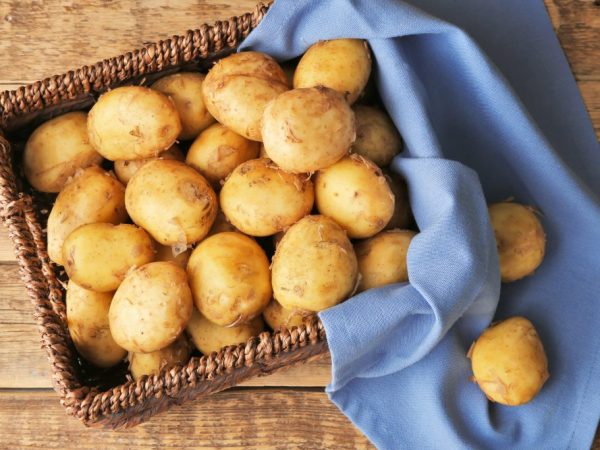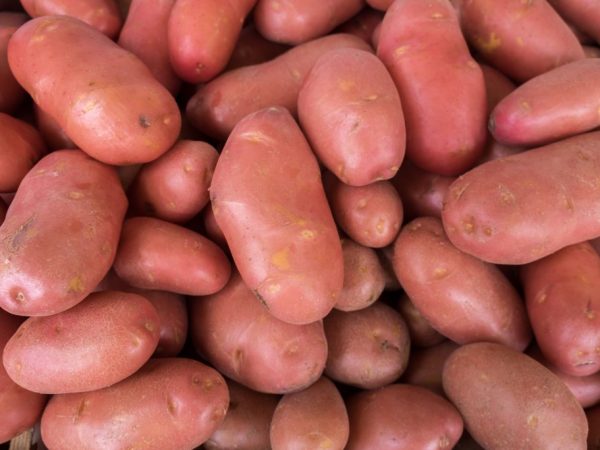Yielding potato varieties for central Russia
The most popular crop grown in vegetable gardens is potatoes. Even the most productive species will not be able to justify themselves by growing in unsuitable climatic conditions. Potato varieties for central Russia need to be carefully selected with you. This territory is dominated by a temperate continental climate.

Yielding potato varieties for central Russia
The winters are snowy and moderately frosty, while the summer is hot with high humidity. In this regard, from the middle of July, there has been a massive defeat of garden crops by late blight. In such areas, it is advisable to plant early species of nightshade crops in order to have time to harvest before the "epidemic" begins, late varieties very rarely give a good harvest in such climatic conditions. The early species have one drawback - almost all of them are poorly stored in winter. Consider the most productive potato varieties for central Russia that were used in 2017.
What are the criteria for selecting a culture
Potato varieties for the middle lane are selected according to several criteria. First of all, potatoes should give a good harvest and be resistant to mechanical damage, which allows them to be stored throughout the winter. Most often, potatoes with an early ripening period are chosen. Early ripening varieties are dug in early July, when the rainy season has not yet begun. If spring is late, mid-season species are chosen.
The best potato varieties for central Russia: Impala, Adretta, Bellarosa, Rosara, Luck, Gala, Sineglazka, Sonnok, Lugovskoy. Mid-season potato varieties for central Russia are usually treated at the end of June with prophylactic agents against late blight. Before planting, all seeds are placed in a disinfectant solution of manganese or an insecticide to prevent potato infections and the spread of pests.
Early varieties of cultures
The peculiarities of the climate make it possible to grow mainly early types of potatoes in the central regions. Their ripening period ranges from 45 to 90 days. Harvesting can be done at the end of June.
With a strong desire, planting of early maturing species can be carried out 2 times a year. The main thing is to treat the plants with insecticides in a timely manner.
Impala
One of the earliest Impala species. Harvesting is possible within 1.5 months after planting in open ground. It is not affected by nematodes aureus and potato crayfish.
The tops are high, covered with dense greenery. 20 large root crops weighing 150 g each can be harvested from a bush. The total yield is 500-600 centners per hectare.
Adretta
Just recently, varieties of potatoes with yellow flesh were considered fodder, but after the emergence of this species, everything changed. The early Adrett potatoes are ideal for the middle lane. The ripening time of the culture is 80-85 days from the moment of planting.Description of the variety:
- the bush is not tall, erect;
- oval fruits with yellow pulp;
- the peel is rough, yellowish;
- from 1 hectare you can get up to 400 centners of excellent quality potatoes.
The main advantage of the early type of Adretta potato is its immunity to temperature extremes. The taste indicators are beyond praise. After heat treatment, the potatoes decompose. Used to make mashed potatoes and chips, not very suitable for frying. An important advantage of the hybrid is its unpretentiousness to the soil composition.
Bellarosa
The early Bellarose culture has good quality and taste characteristics. Already after 50 days from the moment of planting, the harvest is carried out. In the southern regions, you can harvest twice. Possesses high drought resistance. The composition of the soil for cultivation is not critical.
The tubers are oval, the flesh is creamy yellow on the cut. The peel is pink, rough. The fruits boil well. Up to 400 centners of potatoes can be harvested from 1 hectare.
Rosara

Rosar variety is suitable for dietetic food
High-yielding early potato varieties are represented by Rosara. The tubers ripen for 70 days. The most important advantages of the species: good keeping quality and high resistance to mechanical damage. The species is resistant to many diseases, such as potato cancer, late blight, black leg.
Description of culture:
- semi-spreading bush, erect, medium height;
- oblong tuber with creamy or yellowish pulp;
- the peel is reddish pink, rough;
- the weight of the potato ranges from 130 g.
Good keeping quality of root crops is ensured by a low starch content. Also, potatoes are often used to make dried raw materials. Early Rosar potatoes are dug out at the end of June. Root vegetables are not boiled, they are very tasty. This type of nightshade is allowed to be included in dietary meals.
Luck
A distinctive feature of the early-ripening type of potato Luck, the rounded shape of the fruit. The root crop weighs from 150 to 250 g. The peel is light in color, almost transparent, smooth. The pulp is creamy. Luck is great for mashed potatoes and frying. It is considered a versatile variety.
The advantage is not only good taste, but also low susceptibility to all kinds of diseases. Potato Luck adapts well to any type of soil, tolerates temperature extremes, drought. Tubers retain their attractive appearance for a long time and are perfectly stored.
Gala
One of the representatives of the early types of potatoes is Gala. An unpretentious variety that responds especially well to abundant watering. From one bush, you can get 25 large potatoes of the same size.
The ripening period is 70 days. This is one of the most popular species, breeders fell in love with it due to its high resistance to various diseases and pests. After heat treatment, tubers are crumbly and have good taste.
Lugovskoy
The variety was bred on the basis of Sineglazka. Ripening period from 80 to 90 days. The species has gained particular popularity due to its good preservation (97% of the total harvest). Bushes are medium sized, erect stem. Leaves are dark in color, matte.
Root crops are oval. On the cut, the flesh is white, retains its color during heat treatment. The fruits are tasty, crumbly. The variety is highly resistant to potato diseases, moderately resistant to late blight. Doesn't like too wet soil. Growing this potato variety for the middle lane is possible without regular watering, it will have enough natural precipitation for full development.
Mid-season varieties of crops
Mid-season potato varieties for central Russia are also suitable. The main thing is to carefully monitor the condition of the tops and spray on time in order to prevent fungal diseases.If the weather is humid and warm for several days, it is customary to remove the lower leaves. Mid-season varieties are better stored. Many species, bred not so long ago, boast resistance to nematodes, pests, and fungal diseases.
Potato varieties for cultivation in the middle lane are mainly represented by drought-resistant species. They don't even need to be watered. The plant is quite manageable with precipitation, and if the soil is mulched with grass, then it is possible not only to preserve moisture in the soil, but also to protect the planting from the appearance of weeds.
Sineglazka
Mid-season potato varieties for the middle lane are represented by Sineglazka, which, unfortunately, is increasingly being replaced by new imported hybrids. Ripening time 80-100 days, depending on the growing method and weather conditions. Bushes are tall, spreading. Tubers are smooth, oblong, with white flesh. The peel is dark with a bluish tint, rough.
One root vegetable weighs about 200 g. Delicious tubers contain a relatively small amount of starch. High-yielding varieties such as Sineglazka bear fruit well on any type of soil.
Son
Another mid-season type of potato that is often planted in the central regions, Sonny. The ripening period for root crops is about 140 days. The bushes are tall, spreading, reaching 60 cm in height. The foliage is medium-sized bright green. The advantage of the species is good survival rate in any climatic conditions.
Tubers are oblong, flat, with white flesh. The peel is pink, has a mesh pattern. The weight of one root vegetable reaches 90-100g. From one bush, you can get 40-50 medium-sized potatoes with high quality indicators. The sonny is resistant to many potato diseases.
Even the nicest elite varieties of potatoes cannot match the variety of sons. The only drawback is the impossibility of planting a view in open blown areas. High tops will constantly break under the gusts of the wind, which can negatively affect yields.
Rocco
It appeared in our territories only in 2002. Differs in high resistance to diseases. Ripening rate 100-120 days. Shrubs are compact. upright.
The size of the roots is small, the shape is round, and the peel is red. On the cut, the flesh is creamy. The weight of the potato reaches 120 g. After heat treatment it retains its shape. Perfect for mashed potatoes, soups and frying. Has good taste characteristics, not watery.
Conclusion
Harvest varieties of potatoes are presented in very large numbers. In choosing the types of crops, you need to be guided by the soil composition of your site and the growing method. Potato varieties for the middle lane are mostly represented by species with an early ripening period.


